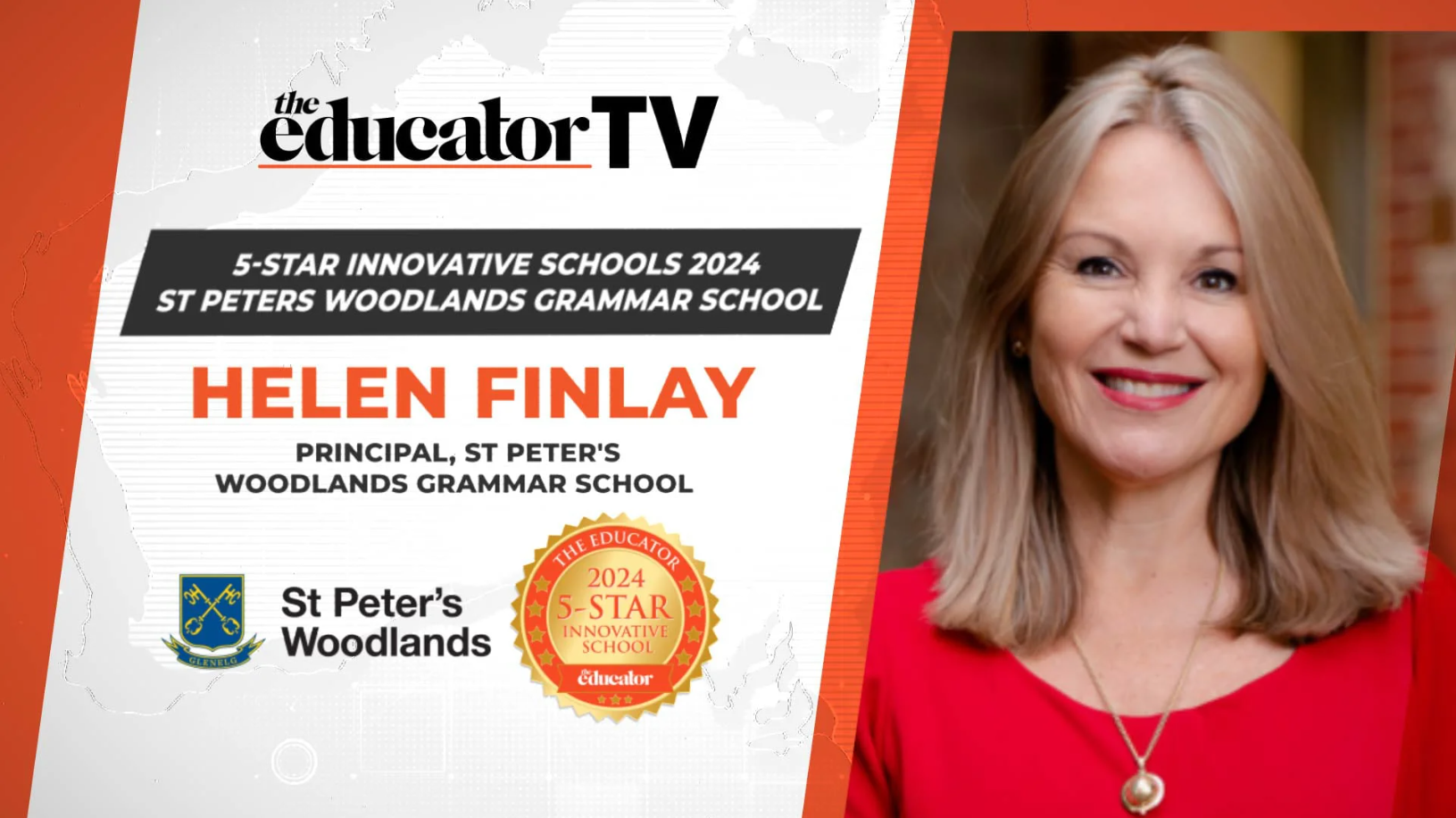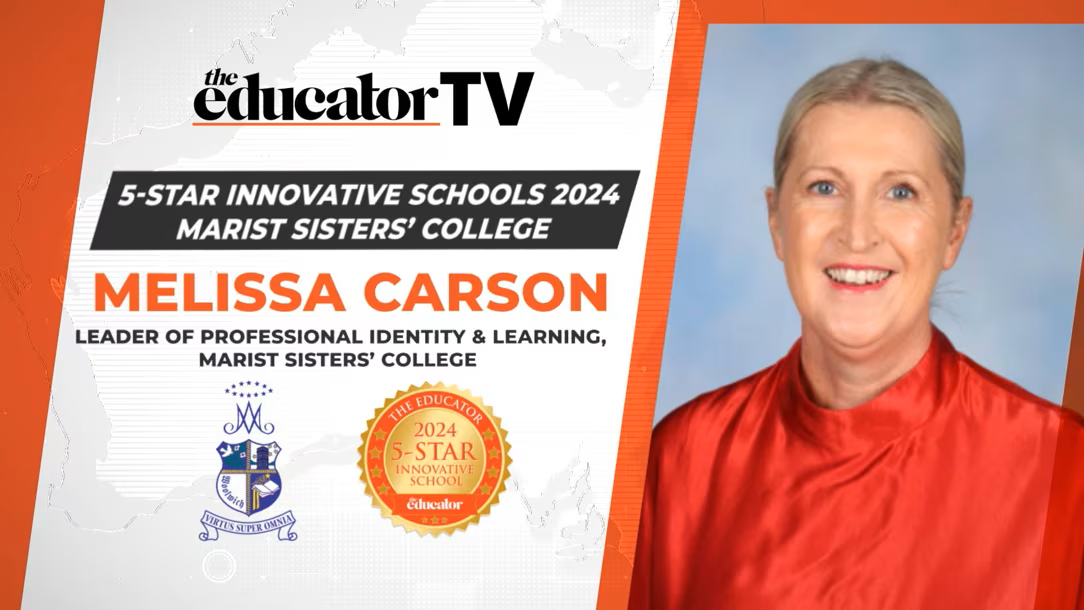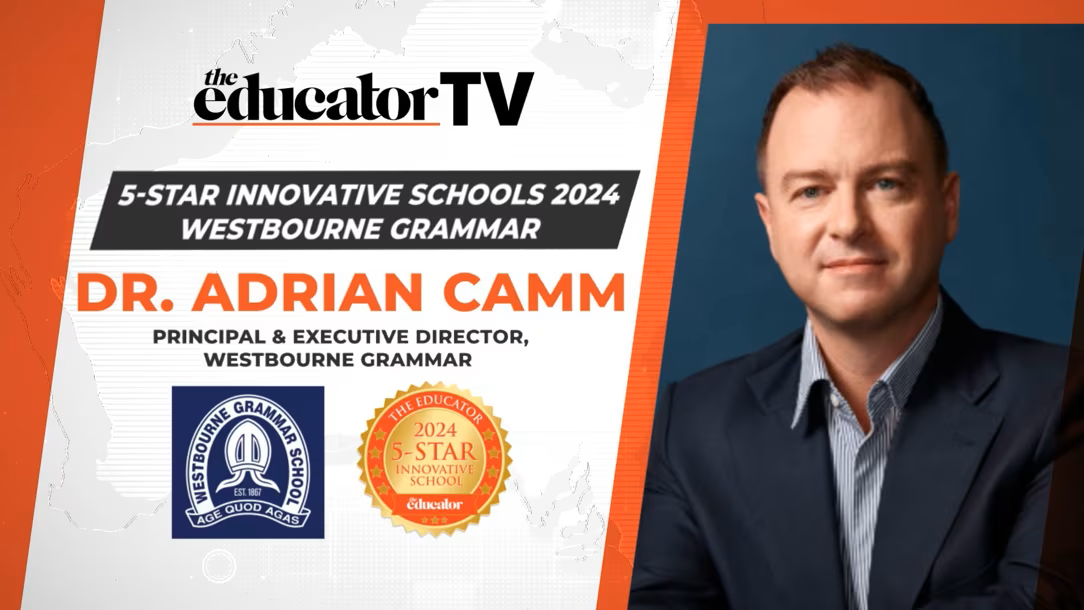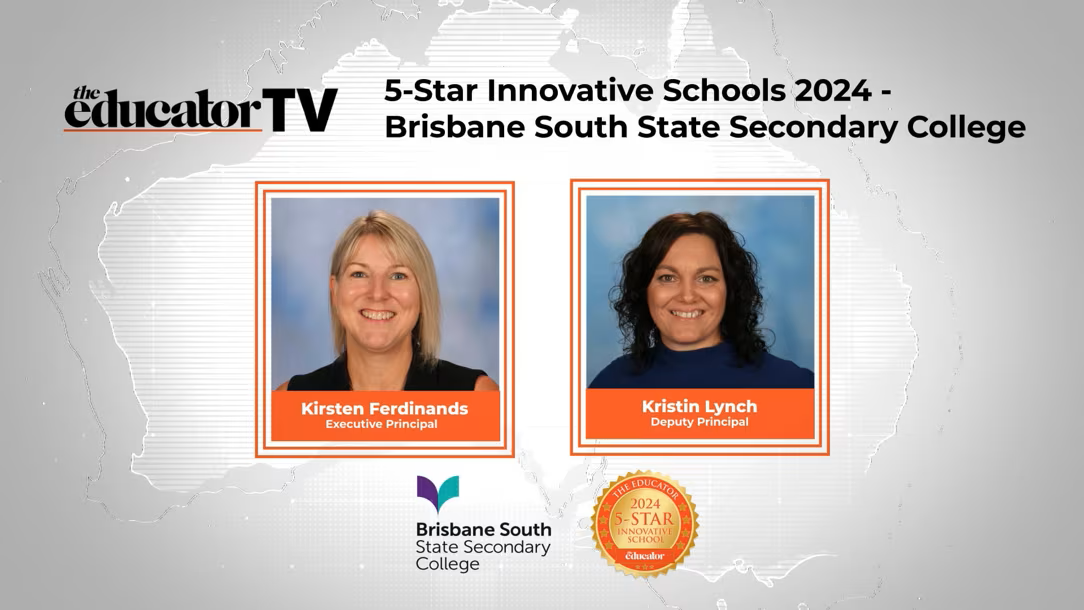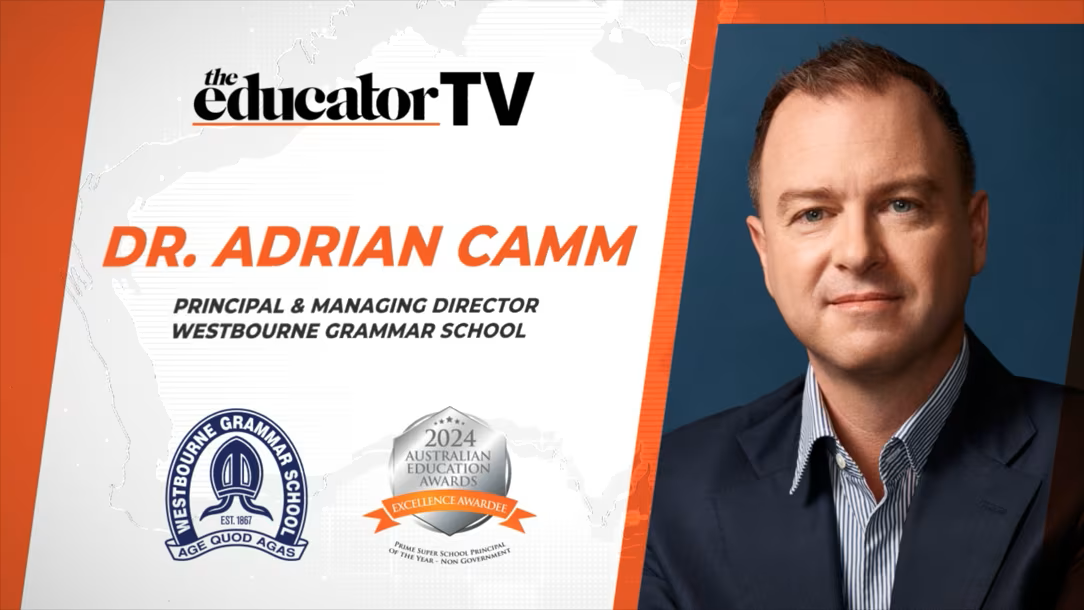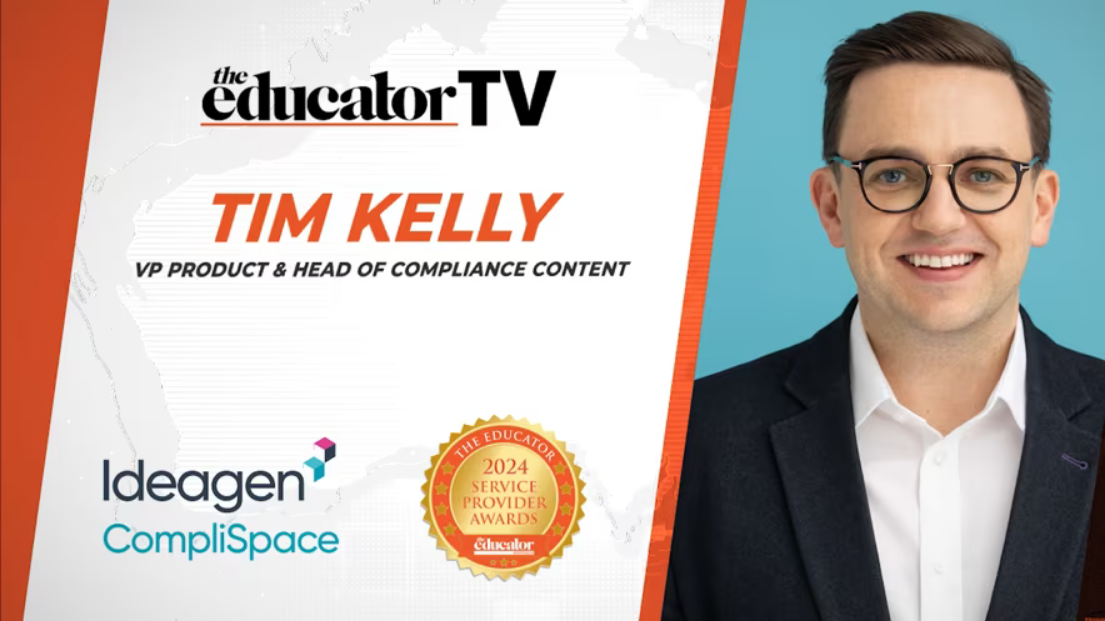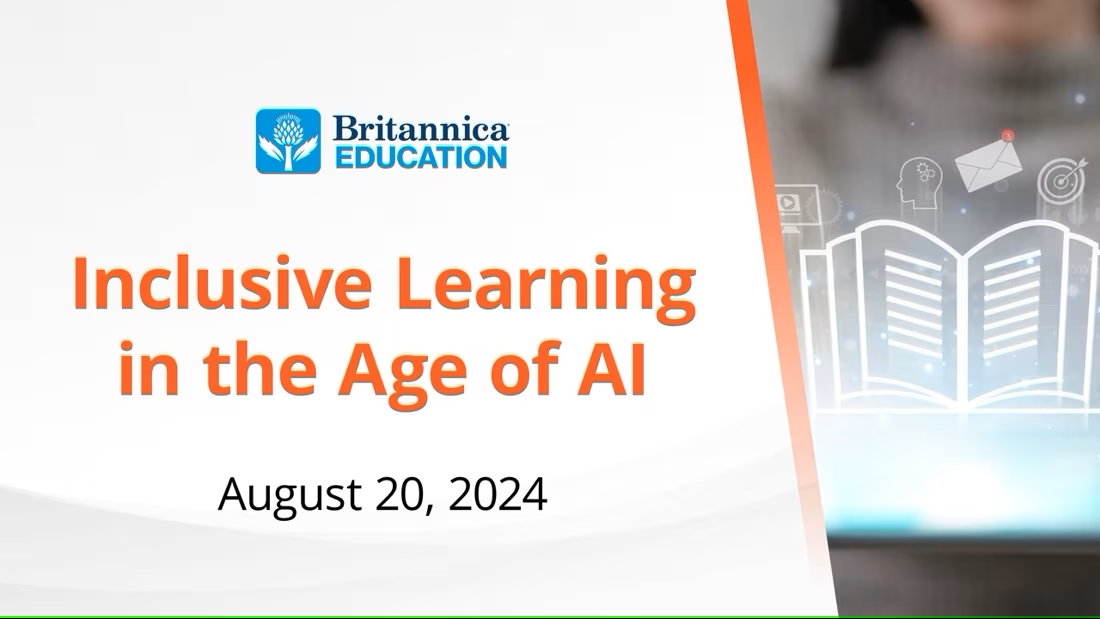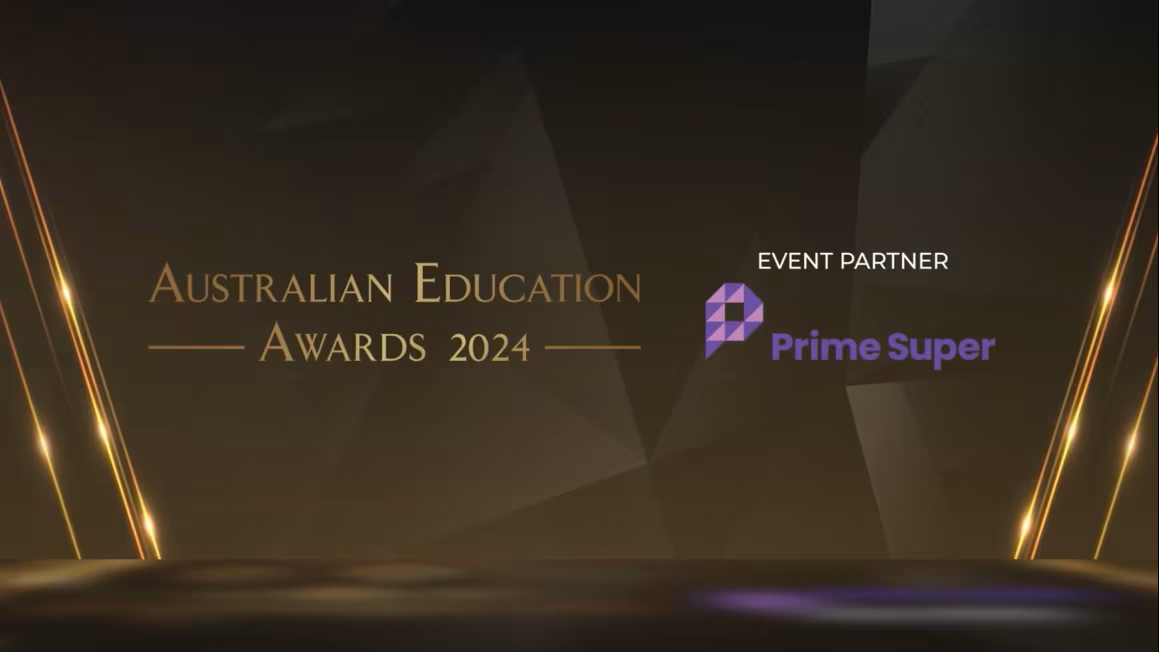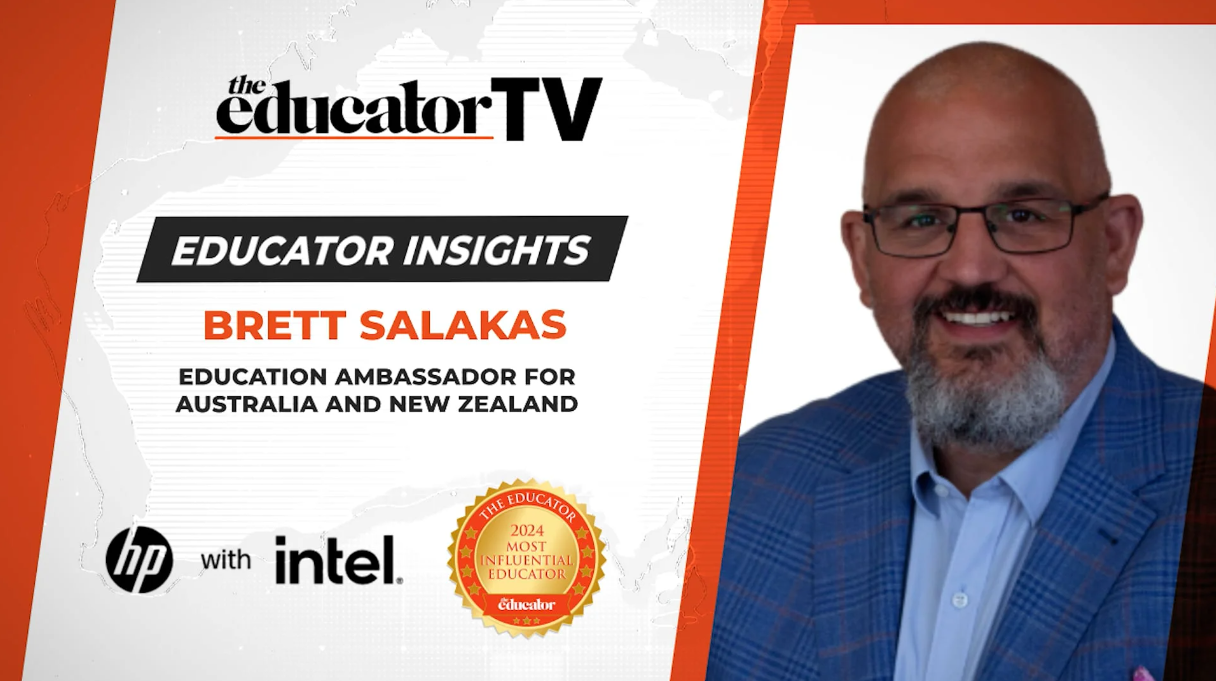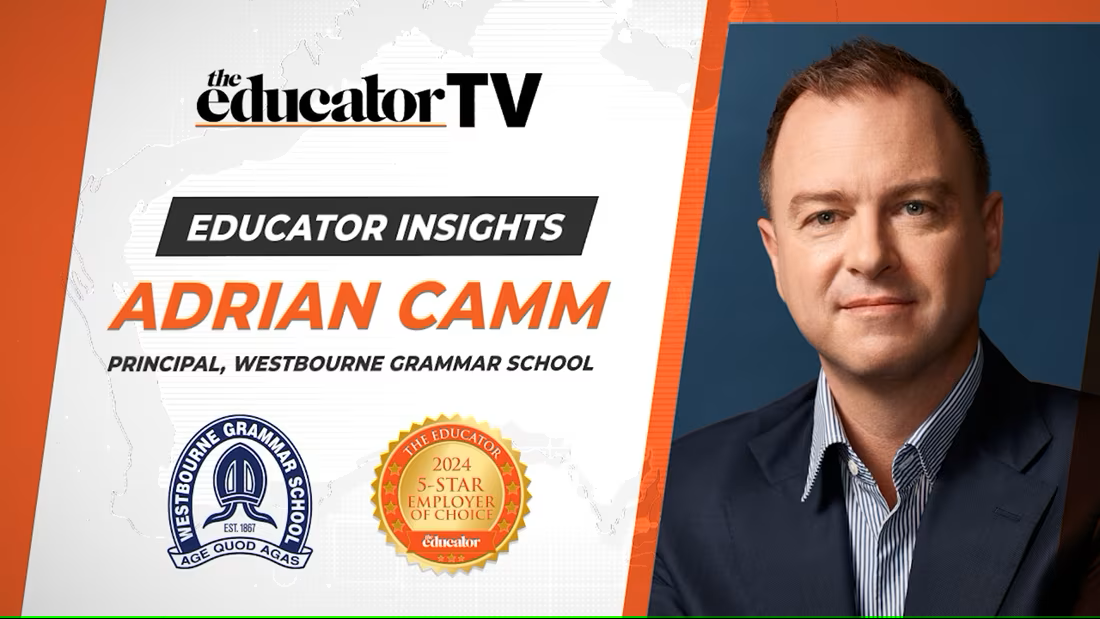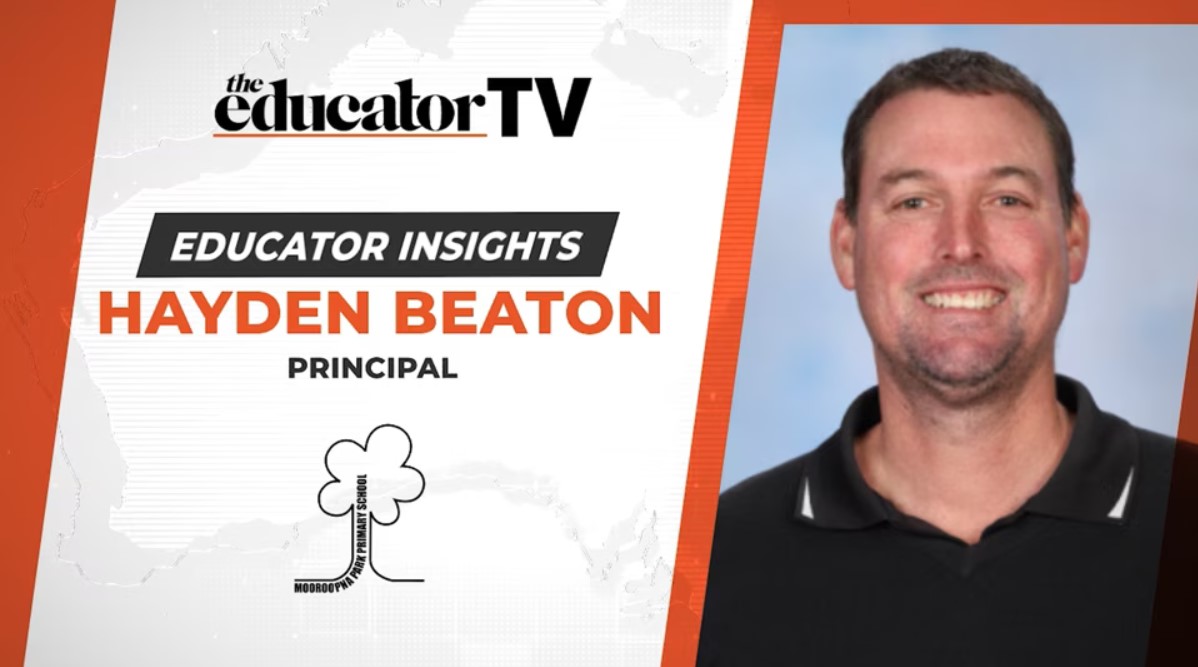The School of the Future: Helping your institution, students and staff thrive in a changing world
Join Salesforce.org, The Educator and K-12 leaders Jamie Beaton (CEO, Crimson Education), Margery Evans (CEO, Independent Schools Australia), Sally Egan (Deputy Director, National Catholic Education Commission), Sophie Renton (Managing Director, McCrindle), and Matthew Cavallaro (Education Specialist ANZ, Salesforce.org) as we share how institutions like yours are responding to current and future trends and adopting technologies to achieve a 360-degree view of their students, to provide a connected and equitable experience in this changing world. With exclusive and yet-to-be released insights from the upcoming McCrindle 2022 K-12 Trends Report, this webinar will explore: • The top K-12 education trends shaping the year ahead • Best practices in meeting students’ academic, social and emotional needs no matter where learning is taking place • How institutions are adapting to the changing expectations of parents • The technology and digital-first strategies providing holistic student support at scale
To view full transcript, please click here
Brett: [00:00:13] Hello and thank you to all of our viewers for joining us. My name is Brett Henebery, the editor of The Educator, and I'm joining you today from the lens of the current people. I'd like to acknowledge the traditional custodians of these lands and pay respects to elders past, present and emerging. But also I'd like to extend our respect to our first nations people, all first nations people from everywhere. You're joining from today. Before we begin, I'd like to just go over some housekeeping for our viewers out there who wish to ask any questions during the webinar. The Q&A function will be at the bottom of the screen and the menu bar, and we'll be going through some of the questions towards the end of the webinar, which will be around 1145 this morning. I'll now hand you over to Matt Cavallaro from Salesforce. Over to you, Matt.
Matt: [00:01:03] Thank you, Brett, for the introduction. And thank you to everyone who has joined us today for a great webinar with a really exciting panel of guest speakers. Also, special thank you for the work that each of you do to support the sector and inspire and engage the minds of our youth across Australia and New Zealand. Next slide, please. To start, I'd like to do a bit of an introduction of myself and Salesforce.org. Firstly, myself. For many of those in the audience who work at schools, I come in peace as one of you. I've spent the last 14 years of my career, really my entire career, working in K-12 education from a teacher coach and finished as a head of positive education. It was a really powerful experience, both personally and professionally, and this really brings me to introducing Salesforce.org. I feel personally connected to Salesforce.org because while it may seem to be a major change in career trajectory to now work for one of the largest tech companies in the world, and I do love the free food and ping pong tables in the office. What is really important is the dot org and salesforce.org. The team at dot org are really the heart of Salesforce and that we get to take our industry leading CRM tools and bring them to the fore purpose sector. We serve as a core of core part of Salesforce 1 for 1 for 1 promise with 1% of profits, 1% of staff time and 1% of our products donated to the for purpose sector. Because we know that our our tools can both do well and do good for all organizations. Next slide, please. But enough about me and us. What is really important about today's webinar is the inspired group of panel members who bring a wealth of knowledge and experience to the conversation today. I'm really flattered to be able to be a part of this conversation with them all. Now I'll briefly introduce each of them before I walk you through the agenda for today's webinar. In a moment, I will be handing over firstly to Sophie Renton, the managing director of McCrindle, who will open the discussion today with an overview of the whitepaper they have prepared, looking at key influences and trends in education. Our panel joining us representing the independent school sector is Margery Evans, the CEO of Independent Schools Australia. She will be joined by Jamie Beaton, who is the co founder and CEO of Crimson Education, which also includes the Crimson Global Academy. And rounding out this really talented and highly knowledgeable panel is Sally Egan, the deputy director of the National Catholic Education Commission. Next slide, please. For today's agenda, we will start with an overview of the key topics from Sophie Renton at McCrindle and the top ten trends shaping the K-12 sector. And then we'll have a panel discussion reacting to these trends with a really rich discussion, and then hopefully we'll be leaving some time at the end for a Q&A, some questions. And that's that's really the plan for today. Over to you, Sophie, to get us started. Thank you.
Sophie: [00:04:15] Wonderful. Thank you so much, Matt. As Matt said, my name is Sophie Renton and I'm the managing director at McCrindle. And it's my great privilege to be with you today to share some of the trends that are impacting the education landscape. At McCrindle, we are really passionate about uncovering insights that guide decision making and presenting these ideas in really simple, digestible ways. In essence, beautiful insights for better outcomes. And we had the privilege of partnering with Salesforce.org on this project to present to you the top tens that are shaping the K-12 sector in both Australia and New Zealand. So we'll be exploring five trends that are shaping the world now, and then five trends that are looking to the future that are shaping where education might be going. So we'll start with the current, the trends that are driving change. Now, the first key trend here is personalization. If you have been around the education sector for any length of time, you definitely know that there is a rise in personalization, in tailoring education to the individual needs of each students. And we know that this perspective is actually held amongst both educators and families, with 96% of educators and 94% of families believing that schools should, at least to some extent, provide individualized education. Now, there can be challenges with that. And what does individualized education mean to different people? And maybe our panel can unpack that further today. But when we, I guess, dug into this a little bit more, we can see that just a quarter and believe that the school should provide extensive, individualized support for all wellbeing issues because it's not just individualized education in terms of academics, but it's also this individualized education alongside understanding the whole of the person and the well-being that goes alongside that. But the majority fit into this 46% that say that schools should provide individualized support, but then refer on to other experts in this place. And so it's how do we create this community of connections within the education sphere so that they educators can drive the academics, but also the whole of life of the individual? But recognize that not every teacher is a trained psychologist and counselor and mom and dad and everything else that maybe society expects of a teacher. And where can educators draw on the connections of the holistic community to help shape individuals within their care? The second key trend is the trend of digital integration into the education delivery. We know that the last two years this trend has accelerated not necessarily by choice for everybody, but in response to COVID 19 and the pandemic and the realities of life and what was thrown our way. And so in 2020, 97% of educators worked at a school delivering remote learning due to COVID 19. Now, that was a great blessing. There was great opportunities that came with that, but there were also some unique challenges that came in that time, such as supporting students with pre-existing or emerging mental health concerns, behaviors, challenges, or disabilities communicating effectively with. Students and their families. Ensuring students home context was conducive to learning, including access to financial or family support, and delivering learning to students with limited internet access. When students aren't just within the classroom where maybe you have control over the experience and the environment, there are a lot more factors at play to consider. And as schools start to re-establish new rhythms and there is a conversation around hybrid learning and the integration of digital, what's the actual realistic ongoing integration of digital that is healthy and provides a great education for our students? The third key trend is well being, and there is a greater and growing continual focus on wellbeing and whole of life education. We know that three and four educators believe supporting students with mental health issues is one of the most significant challenges that school communities face. Wellbeing is rising to the top of the agenda within schools, but it's also rising, rising to the top of the agenda within workplaces. And as schools as a whole are considering, how do they support the wellbeing of their staff, their teachers and that broader community? Because if you think about it, both schools and workplaces are essentially the nexus where every single person in society flows through at some point. And so it's fallen to kind of these two institutional areas to explore and address this issue of wellbeing. Fourth key trend is expectation inflation. Once again, if you are an educator, you have lived this experience and you know this one personally. We did a study with parents and we explored what their expectations were around communication. And what we've found is that 60% of parents expect at least weekly communication of emails, calls, blogs, or even texts from their child's school. And we kind of described this and a teacher described this to us as communication has changed. So I think part of parents expectations of school is that they're getting a lot more information about their child. I think expectations are higher and at times there can be more pressure on the whole situation. So teachers are feeling this increased pressure around communication. And just to to throw in a thought here, it's it's understandable maybe why parents are starting to have this increased expectation when you look at childcare centres and the amount of information that is given to parents. From the earliest of ages that they get used to knowing everything about their child and the day and almost what they ate for morning tea. And then that starts to flow through into the education system. Now, not every single one of these trends do we need to respond to and just say, Oh, yes, you want that, we'll do that. But it's important to understand the expectations and the perceptions that parents are coming to schools with and going, okay, we can address this like this, but maybe let's tailor this looking slightly differently. And the fifth key current trend is character formation. A greater focus on the development of character qualities and transferable skills is absolutely essential to position students of today to thrive and be prepared for the changing world of work. With the rise of automation, it's increasingly the human characteristics that will help future proof today's students and some of these skills which congratulations to the education sector for actually digging into these and responding to this trend. Those are the skills around critical thinking, problem solving, creativity, communication, collaboration, and then even those more human skills and character traits of curiosity, of initiative, persistence and grit, adaptability, leadership and even increasingly social and cultural awareness. And I think it's this self awareness and societal awareness that is going to be increasingly important in the future. And even self management, particularly as we look at the workplaces that we're preparing students for and the boundaries are shifting and it's falling to an individual to manage their workload, manage their time, understand where and when they work best. And if we can start to equip students with these skills at an early stage, that can set them up to thrive into that future workplace. So those are some of the current top trends, the emerging trends. What are the five emerging trends that are shaping education? The first is complexity that schools will operate in an increasingly complex and environment, and to operate within this regulatory environment, schools must adapt, changing their systems to be even more student centric. Mark McCrindle, the founder of McCrindle here, has shared with us that principals have a lot of challenges and complexity in managing compliance for their schools, their child safety work, health and safety registration, accreditation requirements, financial accountability, fit work requirements, risk management and so on. And the rise of COVID 19 has also impacted the complexity with hygiene, compliance, public health orders and vaccinations. Is it any wonder that schools and teachers may be feeling a little bit tired because the social complexity that schools are navigating is on the rise and is set to increase into the future. And it's not just the social, I guess, area that is growing in complexity, but it's also the digital area with 62% finding it difficult to keep up with the increasing number of new applications used in schools across both operations, teaching and learning. So it's increasingly becoming a complex environment to navigate. The second is the consumer mindset that school community members are expecting more from schools, yet contributing less. They're moving from community members to consumers. With 40% of families. They have actually increased their engagement with their child's school in the past two years. However, engagement looks a little different to maybe what teachers would expect and that is mainly through parent and educator interviews. Less so are parents involved in canteens, carnivals, reading groups that kind of lifeblood of community. And there's a number of factors that flow into that increase, including rising cost of living, dual parents working, the lack of time that can come in. And it's really seen this shift of parents shifting from volunteers to consumers in the education environment. The third key trend is diversity, that our school communities are becoming increasingly diverse. Both Australia and New Zealand have a large amount of their growth coming from net overseas migration, which means that cultural backgrounds are religious backgrounds and languages other than English are growing within our school communities and to the schools of the future to to thrive in and to embrace whole of life education.
Sophie: [00:15:15] That's going to be an increasingly important factor to go. How do we recognise this diversity? How do we celebrate this diversity and give our students, all students, a place to belong within our school communities? And the fourth is communication. And we've seen the rise of personalisation and digital in the way that education is delivered, but also in the way that we are communicating, and particularly when we think about parents of the future. Gen Z are the next generation of parents coming through with Generation Alpha students, and it is largely parent expectations that do start to shape some of the delivery of education. And just a fun fact about Gen Z and maybe a slightly scary one because these are your students today and parents are the future is that 74% on average, 74% of Gen Z's time outside school or work is spent online. And so they're an increasingly digitally integrated generation. And the communication into the future needs to, I guess, feel and be connected in that digitally integrated world. And one of the we do a number of satisfaction surveys with schools, and one of the key ones we find when we explore parent communication is the multiple platforms, multiple outputs. And parents are looking for that one stop shop, simple place to find everything that they need and that is only going to increase into the future. Technology. The rise of technology into the future schools are innovative and will be at the forefront of technological advancement they have done so far, and they will continue into the future. They've responded well to COVID. Goodness me, education educators, you have done incredibly well to continue to educate students in these challenging times, but to remain at the forefront. That continuity of adaption and involvement is going to be crucial. And some of the top priorities for technology staff working in schools is actually improving that integration between the existing existing systems or streamlining system administration and finding the ways that technology can be something that serves you rather than something that becomes, goodness me, I've got to update this in six different places now. And with a wealth of data and information that's around, it's finding those points of alignment and simplicity around technology that are going to be crucial. And a number of schools have actually increased their technology budget to help respond to this. So one quote I will leave with you today is that the strength of an organization comes from its stories and its traditions. We could say the strength of a sector, the education sector, comes from its stories and traditions, but the future of the sector rests in its relevance and its innovation. So I'm excited to leave those insights with you and to jump into the panel discussion and to hear what they have to say about some of these emerging trends. So back to you, Matt.
Matt: [00:18:25] Thank you so much, Sophie. And I definitely and I know that many educators out there would be hearing those trends and seeing them and knowing that they're playing out daily in their own classrooms. So very powerful. And I think I have to preface that we probably could go one on one with a fireside chat with each of our panel members today around these topics. So we'll do our best to hit on many of them. But I'm sure I'm sure there's many more conversations to have around the great work from McCrindle around that report. So let's get started with the panel. Let's hand over let's get out of the way and really hear from this this talent. And so we have heard about some current emerging trends from the McCrindle report and certainly last two years of auditing quite a bit of change. But I'd like to start and the way to start today's conversation is to give each of the panel members an opportunity to reflect on the last two years and really think about some changes that have happened which are positive and really we're hoping to see continued on into the future. So I'm going to kind of usher through and I might start firstly with Sally Egan and welcome to the conversation today and over to you to to respond.
Sally: [00:19:35] Thanks, Matt, and thanks, colleagues. Look, I think it would be fair to say it's an industry or a sector watershed moment that we're working through at the moment, and for us to consider how we can utilise how societies recognise the work our teachers have always done but continue to do. It would be fair to say our teachers have highlighted the value of education and the importance of all our learning for all our students, whilst being remote or online learning and in some cases hybrid. And that's been a challenge, I think our parents and our stakeholders and way beyond the school gates, our community members have certainly recognised the value our teachers have made to ensuring our students have had the very best in the last two years.
Matt: [00:20:19] Thanks, Sally and Margery for you. Your thoughts?
Margery: [00:20:26] Thanks and, and hello to all our listeners. I just want to build a bit, I guess on what Sally has been talking about. I think COVID has really emphasized the critical role of schools and made that very public, very explicit. It's what teachers have known for a long time. Schools are really important places for most young people. They're safe places where they experience friendships, how they learn how to negotiate relationships. It's how they see things from different points of view. And it's all about learning. So. The positive, I think, has not been that there's and there have been lots of change. But I think one of the positives is that what enduringly wonderful about schools has been much more explicit to community parents, students and even teachers themselves. They've been reminded about the really important place of of schools.
Matt: [00:21:29] Right. Thank you, Margery. And lastly, Jamie, thank you for joining us. And I'd love to hear your thoughts on the last two years from your perspective.
Jamie: [00:21:37] I think a major innovation in the last two years has been the widespread adoption of online schooling and blended learning across the school system. Around two years ago, we launched Crimson Global Academy, our accredited online high school, and at the time, prior to COVID, this was sort of a somewhat futuristic concept. It was quite popular in America, but in New Zealand and Australia there weren't really any online schools of any scale. But I guess throughout this time online schools really proliferated. A lot of governments have leaned in to this and provided the ability for these schools to register and accredit and in many families have experienced online schooling for the first time, saw the benefits and also the drawbacks of some of the delivery models. So I think the era of online learning means students have more choice to access quality teachers from any part of the world. Voice over curriculum, choice of extracurriculars, and also choice over their time when they want to learn how they want to learn. And all of that provides a healthy sense of competition, but also partnership for innovative schools that want to make sure they're offering kids all the possibilities for their learning options.
Matt: [00:22:35] Alright, thank you. And let's start to maybe dive into some of the key topics. One of the ones I know it felt quite personally is the topic of expectation inflation. I'm an optimist. I think that certainly in the last two years, I think undercurrent of some of the comments that were just made was the the real clear expectation inflation that came out of COVID and the role of schools. So I kind of see that as a positive showing the true value of education. But Margery, I'm curious your thoughts and how you feel that schools are successfully adapting to the increases of expectations.
Margery: [00:23:14] Well, first of all, expectation inflation is very, very real. And it's not just what our parents are expecting schools to provide. Students themselves are interested in greater agency. Teachers are talking about the sort of conditions they need to make sure that they work at their best. Communities want everything from consent, education to road safety, and even governments are really interested in compliance and accountability at much higher levels than perhaps they were before. I suspect this is symptomatic of our times rather than particular to education, but it's certainly here to stay. And so one of the big issues associated with this expectation, inflation, is really how to respond. And you're alluding to this, how to respond without burning out staff and school leaders. I think the answer is relatively simple but very, very difficult to execute. So it is about recognising that. It is about adapting and communicating. So it's talking with staff about what's expected and what's reasonable. It's talking with that students what their freedoms are, but also what their limits are. And of course, talking with parents about what's available, what's the value proposition, but what are the boundaries as well. So I'm currently in South Australia and spent yesterday visiting several schools and took the opportunity knowing that I was coming on today to talk to them about this very issue. So Annesley is a junior school in Adelaide and they survey their parents, their staff and their community every year. Ask them what it is that they're doing well and what what else they need. And a whole lot of schools do this and then they respond very explicitly. They publish the results and they take very concrete actions. So one of the things that they've done, parents talked about the fact that they weren't really clear about what the whole the curriculum for the whole year was. So the schools mapped it out, printed it on a big poster, which is right at the front gate. Investigator College at Victor Harbor encourages parents to email teachers with their queries and their suggestions, but is very clear has a very clear policy that those responses will be have a 24 hour period so teachers know where they stand and parents know where they stand. So I think at schools that are good at listening, they're open to change and transparent about what they will and won't do that are most likely to meet these inflated expectations.
Matt: [00:26:04] Right. And how nice is it to have those examples in person meeting with schools, which is really great and wonderful. Thanks so much. Jamie, I'm curious, you have a really probably a different view and vantage point of this expectation, inflation and maybe seeing some of that expectation boiling into and boiling over into the crimson world can maybe give us your your view and feedback.
Jamie: [00:26:27] Yeah, sure. So I guess the thing about Crimson is we're typically supporting students to get into these global universities and it's from 20 plus different countries. So I see parents from China to Russia to New York to San Francisco to Sydney. And so I'm able to sort of see an interesting lens on how this has evolved. I think that naturally as the world becomes more global, people are competing for education opportunities anywhere in the world. Careers are global. Young people are moving from country to country for their careers. There will be growing competition between not only schools, but also across countries and education systems for for quality. And I guess a lot of this competition comes from a lot of migration, with as many families moving into Australia from China, from Korea, where the education system is super focused on results. And the first question up here and asks isn't how big is the sports field, but what are the university results, what are the academic results, what is the work, what is the experience of the teachers? So I think obviously one of the things magical about Australia is the balance in the sense we do of that holistic education in a lot of the schools in Australia. But I do think that this trend of inflation, expectation, sorry, expectation inflation I should say is only going to be on the rise. As you know, there's more global standards, international curriculum, international benchmarking and also the bar for universities get higher. Just recently there was the Ivy League admissions day and Harvard just had a 3.13% acceptance rate, which has fallen by half in the last seven or eight years. And there's actually an increasing number of Aussies applying to some of these great schools. So I think overall this kind of engagement from parents is healthy. I think it's good that parents and students are aiming higher and higher, but it will put pressure on schools to do more parent reporting, do more engagement, make sure they're transparent with how they're going and the delivery and what makes them unique and etc.. But I do think this trend will continue on the rise and as we get more global, those expectations will keep bubbling.
Matt: [00:28:13] Right. Thank you, Jamie. Now, Sally, I kind of, I think, built into this idea of expectation inflation and connected closely as this idea of personalization of education. So I'm kind of transitioning. But still staying within the topic is is getting your reflections about how schools address personalized learning as expectations continue to shift while developing the whole learning agenda as a school.
Sally: [00:28:40] Thanks, Matt. I think it's except this accelerated learning and teaching through innovative ways and it's when we've seen that in our schools well before COVID. But more recently, our workforce has continually made sure they've kept a line of sight on their students through use of technology, whilst recognising there's a balance in making sure they make that connection with their students. One example of this has always been, from my perspective, the importance of goal setting for our students to understand the importance of co constructing that through, you know, addressing their learning trajectory, their sense of wellbeing in their school, but also making sure that they understand what's their point of challenge and where's that student agency in that place. And we've certainly seen that in our schools across the sector. What I love about when I visit schools and similar to Margery, is when we see learning in action, we can see that the students own that learning, but their teachers are certainly monitoring that learning through the development of learner profiles and making sure that they're accessing and experiencing the skills they need beyond those school gates. I think the personalised learning is also enabled us to see how the character formation is being developed in schools, and I think we're there yet, but it's certainly an exciting area for us to consider as we progress our students through the next phase of this exciting learning that they're going through. I'm optimistic that our students are accessing the very best they can, and our teachers are working towards that next practice by using innovative ways to monitor and support every student in their classroom.
Matt: [00:30:25] Right. Thank you. And I guess maybe back to to Margery. And with this topic of individualized education, and certainly there's this, I think, a growing sense of hopefully, again, I'm going to be optimistic as well as Sally is this idea of self awareness of greater parents and appreciating diversity. So this is maybe a growing trend with personalized education. You could see some negative sides with maybe this is an expectation inflation part as well. But I think overall it is a positive starting to see an individual student. And I'm just curious from your perspective, Margery, how are you seeing schools successfully individualizing this education experience?
Margery: [00:31:06] So maybe I just want to start by challenging a bit where the individualized expectation in education is an expectation, in fact, whether it's achievable or always desirable. So absolutely. Clearly, parents, students, teachers want to respond to individual needs of kids, but that doesn't mean they have to be it has to be individualized and students have to be doing something different all the time. I think it's I think rather than using words like personalization or individualization, maybe it's a differentiated instruction that we're talking about. People can use the same process and different context, and everyone's going to do a book report, but they use a different novel, or there's the same lesson. But just like when I go to aerobics, I'm certainly not at the peak level. Some some kids will be working at different levels to other children. And of course, there is some times where we do want to have one on one and small group. And I think again, going back to the conversation a bit earlier, working from home taught us that we do need a mix of one on one and small group and whole class to get those collegiate and social elements. So so yes, let's focus on what children's needs and interests are, but let's not assume that that is a highly individualized curriculum. And again, let's do a real shout out to our teachers. Diagnosing what student learning needs and interests are is complex, then knowing how to respond and then organizing your classroom to make all that happen, it requires real skill and I think our teachers are doing a fantastic job in doing that and of course technology helps with that. So I think I think it's very exciting. I think it's very the potential. When I first started teaching, we didn't think about that. It was the delivery of the lesson and kids did or didn't catch up. It's a very different it's a very different experience now and a very talented requirement. High levels of skill required of our teachers.
Matt: [00:33:30] Yeah. Thank you. I think really, I like the way you reframe some of those key terms, and it is recalling my own experience a little bit, that balance between the individualized but still education and schools are a collective experience, a community. So making sure that there is still that that individual. But there is certainly and we saw that come through the criminal report those may be soft skills. My background and you know being in positive education those key skills that that only are actually gathered in a group. So I think I really like the way that you reframed the view of that particular topic. Thanks so much, Margery. Kind of starting to maybe round out the current trends. One of the areas that we saw around expectations is it's starting to push around the boundaries of curriculum. Certainly there is a very core standardized curriculum, love or loathe, depending on where you are and your experience. But what's kind of an expectation or a view of real world hands on education is something that was kind of reserved in the higher education space, but we see as many trends in the higher ed start to trickle down, and we're starting to see that move into the K to 12 space where we want more of the hands on experience that is real world of what is going to be needed in the future. So Jamie, this question may be a little bit to you and your experience is how do you see schools addressing the need to prepare students for technology such as data analytics, artificial intelligence, cybersecurity and cloud computing, among others?
Jamie: [00:35:06] But I think it's a great question and it is a challenging one to start with because there is a chronic shortage of teachers in the computer science arena. And then artificial intelligence is like a niche within computer science requiring often quite advanced statistics. So I think the first thing schools need to do is really focus rigorously on math. Education in New Zealand and Australia have got pretty good math education, but it's still there's plenty of room for improvement relative to schools like countries like Singapore or Korea. So I think the first thing you need to do is make sure kids get the fundamentals in math. That means you can pick up machine learning, you can pick up computer science with the many amazing tools online. At our school, we've launched a unit called Crimson Code, which teaches artificial intelligence, machine learning, coding, coding in different ways from web application development to mobile apps, including both practical projects as well as qualifications you can get in that you actually get exams from can use for university. So I think the good thing is schools can partner with folks like Coursera or other providers to bring in a lot of this content that the school might not necessarily have. But I do think it's a really awesome area for schools to innovate because what I'm seeing is a lot of our smartest graduates from around the Crimson network around the world when they're in these hubs like Silicon Valley or Sydney or Shanghai, many of them are going into these areas like artificial intelligence. And those with skills in these areas have some of the most, I guess, competitive salaries and the most office available. There's a real shortage of engineers in Silicon Valley right now. So a lot of these folks are getting five, six, seven, eight different offers for 200,000 USD plus compensation packages at the age of 23 walking out of these programs. So I think there is a chronic like supply issue with this area that schools can focus on. There's been some great innovation. I know. Knox For example, your old school met launched a AI club with a student called James Jung who got like, I think New Zealand, Australia's first air club, rocking and rolling training younger kids on what this whole area looks like. And I think students should lead innovations like that are also very positive and there's a lot of support from the schools leadership there too. So there are a couple of different things that I would be thinking about.
Matt: [00:37:08] All right. Excellent, wonderful perspective there. So moving in and again, apologies. There's so much to talk about on all of these different topics, but I'd like to kind of keep advancing forward and maybe talk about some of the emerging trends and one that jumped out. It kind of is an undercurrent and may be connected to the expectation. Inflation is this idea of the consumer mindset. And the report highlights highlights increasing shift in families relationship to schools where they're seen more as consumers of the services provided rather than maybe the active participants of the community. So I'll start with yourself, Sally, to get your experience and your feedback. But how do you see schools successfully navigating these emerging trends and relating with families who are much more consumers rather than members of the community?
Sally: [00:38:00] Yeah, look, as educators, all of us here today, we've we've shared learning like we've never before, through online learning, through conversations, through checking in with parents and families. And really, we've let our parents in in a very different way, and we should be very proud of that. But that brings some challenges with that. Our parents are keen to be consumers. They want to know now more than ever, simply because I think we've let them in on the journey and the challenges and the realities of how we learn and teach in our schools and how we assess. I think it's an opportunity we need to embrace and we need to think about how we can construct the possibilities for both the parents and the schools to come together to think about, Well, what does that consumer mindset mean for us? And often I think we underestimate that this could actually flip the opportunity to be such a positive story, to make sure we continue in partnership with our parents and our schools to do this. And really, perhaps the challenge is have we let our parents into this great work we do in schools and could we do it better? And I think that's an exciting challenge ahead.
Matt: [00:39:14] Right. And that's that's a great point. A great question as well. Margery, I'd like to as well get your feedback in the group of schools certainly that you have experience with and currently visiting. What's your experience? How are you seeing schools successfully embrace and maybe with this new change that's coming through the mindset of parents and families?
Margery: [00:39:36] Hmm. Again, I did take the opportunity yesterday to talk to the schools I visited about it, and what came through their stories was really recognizing parent involvement in different ways. So I guess one of the reasons we want parents will that main reason we want parents to be involved in our schools is so that they can support and engage their own children in learning. So it doesn't matter if they're not at the canteen or listening to reading. What's really important is that they're valuing learning, that they're providing environment at home that is conducive for students, that they're supporting their students. So I think we've got to redefine a bit what this engagement looks like. So it isn't just consumerism. It is really a partnership that can take place at the school or at home. And we do know that when that works well, kids have much better long term economic, social and emotional benefits. One of the so let me just give you two examples from a couple of the schools that I saw. One of the schools did talk to me just about how difficult it has been to re-engage parents after COVID, where, you know, everyone's back at work, all those sorts of things.
Sophie: [00:40:52] So they're doing something really simple. They're for the first 30 minutes of the day, they've got some coffee vans set up on the oval and they're inviting parents to bring their dogs, have a bit of a walk around the oval and simply interact with each other. There's no agenda. There's no discussion about learning or any of those things. It's just it's just a way of, quite simply, re-engaging parents. Another school I talked to has actually replaced their formal and a number of schools do this, replace their formal parent and teacher interviews with student led conferences that take place in the classroom. The students are able to walk around and show this primary school, show what's going on, and then there are activities set up, robotics, I don't know, things that they've been taught, gross motor skills that they've been taught in phys ed that they can engage parents in at the same time. So parents are coming, as Sally says, invited right into the learning so that they can reinforce and value that in the home environment as well. So I think the goal really is engagement of any and all types.
Matt: [00:42:13] Excellent. And yeah, I really I do enjoy the idea the thought of going to my own son schools and have a coffee and bring the pet as well. I think that's a wonderful idea and I think that's a good one to bring to a lot of schools. Jamie, around this idea of the consumer mind set, I want to maybe bring to you a possible criticism to the online mode of education and that it's really kind of fostering or highlighting this consumer mindset. And I'm just wondering what your experience has been with the Crimson Global Academy and this move and embrace of online education through through the students and parents that you're working with.
Jamie: [00:42:56] I think if you think about the consumer mindset, usually it's about price and value and a lot of it is about the parents thinking more deeply, probably about what their child's getting out of their student experience. We've really leaned into this crimson global academy by focusing on a couple of things we thought as parents were sort of lacking. First was access to international qualifications. So we bring to students the AP Advanced Placement, which is a US curriculum as well as the British A-level. So kids across any of our countries can access these qualifications and our school partners can do so as well. That was in response to what a lot of families, you know, wanting to make sure the qualifications they were getting in school were internationally competitive. The second is really about transparency into how the child's grades are going and what that means for their end outcomes. A lot of parents aren't quite sure what grades in high school translate to as far as university entrance. So we spend a lot of time trying to make sure that how the child is progressing is translated to families in a way they can resonate with. These are the sets of universities or outcomes that map to how your child is currently progressing, and that really invites the family in to think about what are my child's long term goals? How's my child doing at school and what am I doing at home to support this? So I think we've really encouraged our environment to lean into this quite heavily and we give parents a choice of how frequently they want to hear from the school. And we've got parents that basically trust us to do great delivery within the school and they don't want to be actively involved in the community all the way to parents who want to jump into all the different societies, teach school clubs, all that stuff. And I think it's really great to embrace that flexibility because no two parents are going to be the same and their expectations and what they can bring to the school. So I guess overall, I'd say it requires schools to rise to the occasion, but there's plenty of opportunity, I think, in that environment and schools probably can figure out where they wanted to finish it, what their niche is, and really double down on those strengths.
Matt: [00:44:52] Yeah. Great. And I think I actually kind of skipping through some questions, but I really want to bounce back to you, Jamie, because the curiosity around, I'm hearing Margery talk about the physical on premise opportunities that are still being embodied. And Sally touched on that point as well. But yours is a dispersed online school, and I'm curious how you're talking about parents that are engaged. How does that happen? How do you leverage tools and technology to bring those parents in?
Jamie: [00:45:20] Yeah, so I think we we do a lot. First of all, the students participate really actively in the classroom. And there's a lot of analytics we capture from the classroom around how much the children are engaging like they talk times, how they're doing it in class surveys, assessments and stuff. So parents are getting weekly updates on the child's engagement in class, as well as their assessment performance against all their peers and a benchmark clear format they can understand. And then, of course, there's all the standard things that parent teacher interviews, except they're usually on Zoom or in a format that suits the parents well. And then we do do physical meet ups, typically once a quarter in actually cities like Auckland or Sydney or Tokyo where parents can come and meet our teachers. But we're really happy to do that purely through online. The exciting thing about a digital school is that we're also drawing from families all over the world. So we have to think about communication in multiple different languages to parents. So we have capabilities to talk to our families and, you know, Mandarin or Russian or Japanese. And so we have to have dedicated folks that can cater to those requirements to make sure those parents don't feel alienated or isolated from being part of that school community. So I think the great thing is in a digital environment, using the various tools exist today is unparalleled data on how the child's actually performing and that can be communicated really powerfully to families along the way. A lot of research shows the more engaged parents are in their child's outcomes, the better the results typically and so transparent data that enables appearance to understand be on the same page as good. I think when a parent is out of sync with how the child is doing at school and they're not really on the same page, they create a lot of friction at home if there's misaligned expectations. So it's really good for the whole community the parent, the student, the teacher, all to be aligned around how the child is tracking. And that concordance in views, I guess helps to make sure that the child's feeling like they've got the support and expectations are set correctly for them.
Matt: [00:47:11] All right. Thank you, Jaime, for that. We're getting close to the end of the webinar, some Q&A. So if you're out there, you're sitting out some great questions. Now's the time to use that function on the Q&A. I might ask a couple more questions of the panel, but I just wanted to highlight that to to everybody out there. So I might go ahead and ask those questions so we can get there. We have some rich questions to ask our panel from all of you out there. But my next question is, is watching a bit of a trend that's happening in schools and technology. Certainly, I've had the fortune in my role with Salesforce to start to have these conversations with schools. So speaking possibly to to yourself, Margery, and the independent schools and I'm starting to see the emergence and change of the role of technology and specifically your head of technology at school ahead of ICT, moving from a situation where they sit underneath a business leader or a CFO as a cost center and we're starting to see them move into CEOs or even CEOs running a school that have a deep understanding of the role of technology and the influence it has on the experience of teachers or parents and students. And I'm just wondering, how do you see and how are you seeing this change in structure and the role of heads of ICT and technology as executive leaders, how are you seeing that playing out across some of the schools that you've spoken to and work with?
Margery: [00:48:39] Thanks, Matt. Sophie was really clear in her presentation and everybody knows technology is such a consuming concern of schools. But where schools do it right and get at the get the best outcomes, I think where they're really clear about this, the purpose of of the technology before they start thinking about the technical expertise and the infrastructure. So these key people that you're talking about just aren't the people that can make sure the computer works and that we've brought the latest and the greatest piece of software there. People that really understand that technology is about enabling the teaching and learning and the administration. It's about enriching that teaching and learning through a whole access to a whole lot of tools. And perhaps, as Jamie is talking about, it's even evolving the teaching and learning. And I think that's an area where schools really have got a fair, fair bit of distance to go in terms of things like artificial intelligence and how that can be used, really effective in teaching and learning. So these the emergence of key players around boardrooms and about around executive teams need to be really clear about the purpose. They need to be really clear about how they can support technology in schools through training. And it's not just training of teachers, it's training of students to use some of this technology as well. And families, if we're talking about this, reaching back into homes, there needs to be a really clear consideration of equity and wellbeing so that we don't just increase this huge divide. And then there's, I think, an important consideration about resources, technical expertise and infrastructure. So these leaders are really key in getting the balance right. So the technology is manageable, but it's also purposeful.
Matt: [00:50:49] Yeah. Great, thanks. I'm hearing the talk of the role of governance and that idea when you're talking and having that clear sense of purpose, but also change management is something I'm hearing as well as a key part in focus. I'm curious, Sally, from your perspective what your thoughts are on on this topic.
Sally: [00:51:06] But look, I think the technology we've always said it's it's empowering the learning and teaching and it's changed dramatically. But I think well before these recent times, many teachers were flipping the classrooms and doing all those approaches before. Now, I think whether our structures are there in some of our schools and our systems, that varies across our sector. So it's hard to say and represent that as as well as I would like. But I think what's important at this stage is our students and our teachers have access to the technology they need. I think the challenge for us in all sectors actually in the future is making sure we get the balance right and so that our students continue to learn and grow, but access the very best they can get in, in and out of the classrooms for what they need.
Matt: [00:51:55] Excellent. Thank you. And I think just maybe one question around technology and certainly Sally and Margery, this might be within your role and focus is there is lots of maybe doom and gloom or realities around the number of teachers and possible teacher shortages happening now or coming a little bit closer into the future. And I'm just wondering about the role of technology from your perspective, as a possible way to help or assist in this possible looming human resource shortage in schools? Maybe, Margery, if you'd like to start, I'm just wondering what your thoughts are on that shortage and the role that technology might play in this.
Margery: [00:52:36] I think there's huge potential for technology and the sorts of things that Jamie is talking about already pave the way for that. I think the danger is that a teacher can think that if they or a system thinks that if a teacher stands up and delivers like they're delivering to an ordinary classroom in a face to face situation, that that's going to engage people online. There's a whole there's a whole genre and methodology associated with effective teaching online. But yes, I see it as a huge potential for the future in terms of accessing a whole range of things. And indeed, lots of schools are playing with it already. You know, the physics teacher in a remote school, in a remote community isn't available. So let's pick the best one from one of our Sydney schools or one of our Adelaide schools and see how we can make arrangements. Does that have to happen in real time? What's the support that is required at the student's end? Is the technology compatible? Lots of things to work through, but there are lots and lots of people have already great minds already working on this problem.
Matt: [00:53:53] Right. Thank you so much. And Sally, from your perspective, how do you see the role of technology specifically kind of in connection with the possibility of of a human resources shortage for education?
Sally: [00:54:05] I think we really need to challenge the cross-sector opportunity we have. So, you know, the example of the physics teacher, what if we do have a physics teacher in a rural and remote school and we have three sectors represented in that little town? Is there a need for us to employ three or indeed work together for the improvement and the greater good of these towns that we have in these rural and remote areas? So I think that's an opportunity that we would we probably should leverage sooner than later. And really thinking about that human resource where we tap into the expertise in a school or the school next door and how could we do that? I know some schools have done that, but I think what's important is leveraging that. And have we actually bothered to ask our colleagues the questions in other sectors to see if that can happen?
Matt: [00:54:56] Excellent. Thank you. And I think now we're kind of starting to wrap up and I might throw it over to the Q&A. We've got a couple of questions that have come in. So, Brett, if you wanted to hop on here and let us know some of the questions that you have for the panel, I'll hand over to you.
Brett: [00:55:12] Thanks, Matt. Yeah, we had a couple of questions come through. One from Jonathan, who said, as a follow up to Sophie's closing slide, I'd like to hear how the panel thinks schools can best make local innovation a part of their ongoing story/culture. So to have the best of the past and the future.
Sally: [00:55:36] Oh, there we go. Look, I think one of the great things we could do is just pause and make sure and, you know, I'm not assuming that everyone's done this. And but I think it's important for us to recognize what was best practice. What did that look like before COVID? And what could we stop doing to ensure that we move towards this innovation that we need to capture? And when we think about innovation, we think about the learning and the wellbeing as one and the growth for all us students and teachers and parents in our communities. I think what's important at this point is what we thought was best practice before COVID possibly wasn't at all. And so I think the challenge now is recognize, you know, what should we hold on to? What should we stop doing and never see again? And then what has worked and really scale that as we move towards, you know, a better time in our schools.
Brett: [00:56:30] Thank you very much, Sally. Did anyone else have some thoughts on that question or we could go to the next one.
Margery: [00:56:40] Happy to go to the next one.
Brett: [00:56:41] Okay. So the next one was from Karen. How do in House seat providers need to adapt and change to support these emerging changes in K-12 education?
Margery: [00:56:56] So I think this is I think this is a really tough one. Schools are very different. They've got different resourcing levels. They've got different access to providers. They've got different skill sets within their own staff and with their in their own communities. However, again, I'm just. More and more aware of the sort of support that's available online to do these sorts of things. A sort of support is available in terms of the community assets. And again, go back to COVID. How many teachers had never heard of Google Docs or See-Saw or Microsoft Teams? Two years ago, a lot. And these are just now part of our lexicon. They're part of what all of us know how to do. And so I'm again optimistic that the market will support a number of internal providers. Getting the technology wrong is is is difficult is a big mistake. And it's sort of issues of integration that Jamie could probably talk to better than I. Issues of integration that are so important, I think. But I suspect there's there's a lot of support out there. If internal local school providers know where to look and just and ask.
Brett: [00:58:24] I thank you, Margery. Anyone else want to weigh in on that or.
Jamie: [00:58:30] I'll just jump in there? That from the, I guess, education technology perspective around probably seven years ago now, there was this common conception that trying to produce education technology to sell into schools was a graveyard business because basically all the companies that had tried had failed because it was so hard to work with internal school stakeholders to get these things through. I think that's radically changed in the last like 3 to 5 years where, you know, teachers, leaders of all the top most innovative schools are really pushing the envelope. They're a lot more open minded. They're keen to change, keen to innovate, keen to see what's out there. And as a result, there's been, as the team said, this rise in demand. I mean, rise of creation from entrepreneurs, I guess, all across the world trying to design these solutions. You've seen platforms like Salesforce Education perfect. I think about even our work with schools where we work to help them bring extra classes they can offer in locations. All these interesting examples of where private sector folks have jumped into the space to try and work in partnership with schools. So I think the future is very bright and optimistic as long as that culture and appetite for for growth and embracing new innovation inside the school, I think there should be fantastic community partnerships all around. So I'm very optimistic, very bullish and I think the environments change for the positive in the last five years tremendously.
Brett: [00:59:57] Thank you. Look, thanks to all of our panelists for sharing these insights. And I think Australian education is definitely going to continue going through these massive changes. So the changes but also big exciting transformations, I think. So I appreciate all your insights. On that note, actually, I just want to go through a few save the dates for our viewers. The Salesforce World Tour is kicking off on the 7th of April at the International Convention Centre in Sydney, and there will also be the Salesforce Global Virtual Education Summit on the 21st of April and an on demand event called K12 Tools for Prioritising Student Wellness. So the McCrindle 2022 K12 trends report we've heard about today that will be launched in the next few weeks and will also be made available to all attendees by email along with a recording of this webinar. In closing, I want to say a big thank you again to all of our panelists to Salesforce.org for sponsoring this webinar and of course, to all of our viewers who joined us today. So we hope to see you next time.



